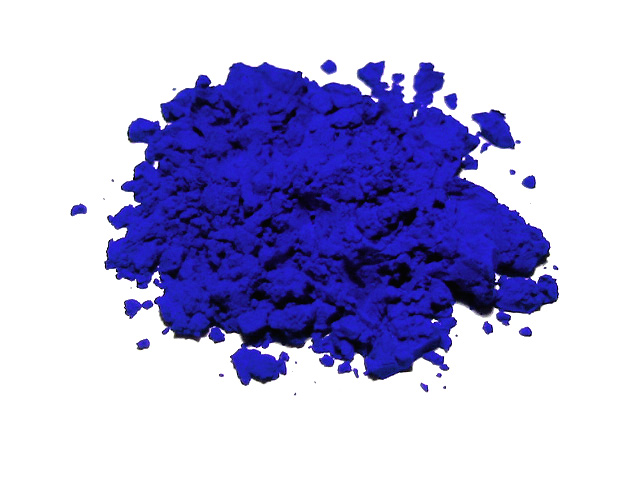A speech from a past life chapter.
March 2019
The Corruption of Lapis
For those of you who were present for my last speech, you now know that my favorite paint color is Ultramarine. Ultramarine is the color of Twilight, when the skies are A rich, deep, blue and whites are fluorescent. I think it’s just beautiful.A lot of you had mentioned that my speech was inspirational, and some were surprised to start thinking about where color - or, more appropriately, pigment - comes from. I’d like to continue on this journey and tell you the story of where Lapis Lazuli comes from, in the modern day, and why I do not recommend looking for it in its’ raw form… As a reminder, Lapis Lazuli is the precious stone from which the Ultramarine pigment is made.Lapis Lazuli is mined in Eastern Afghanistan. It is incredible that the same small area of a single river valley in the Badakshan Province has been yielding Lapis Lazuli for over 6,000 years and hasn’t stopped yet, despite the continued illegal mining exploitations of the modern day.According to a 2016 BBC article, Former British Prime Minister, David Cameron, described Afghanistan - to the Queen - as “Fantastically Corrupt.” My friend in the DOD, when I called him about the idea of going to Afghanistan to see raw Lapis Lazuli said, “You best think twice before you go to Afghanistan looking for Lapis. We might be calling your family to ID on your decapitated head. It’s tribal warfare and it is not safe.”Why would my decapitated head be worth the effort?According to the United Nations, Lapis Lazuli is the second largest source of income for the Taliban following Opium.Technically, all mineral sources in Afghanistan are property of the Afghan government. According to BBC News, however, Uzbek Warlord, Abdul Malik seized the Lapis Lazuli mines 5 years ago. He now rents out access to the mines, earning millions of dollars every year. An anonymous source told BBC News that Warlord Abdul Malik has the mines surrounded by [[air quotes]] “his people”. There are no soldiers or police within 150 kilometers.... Malik pays the Taliban and Senior Officials for protection, otherwise there would be continued fighting over the Lapis Lazuli mines. The Non Governmental Organization, Global Witness, states that Lapis Lazuli mines yielded over $20 million dollars to Armed Groups in 2014. This is the same amount that the ENTIRE LEGAL Mining sector in Afghanistan earned in 2013. $20 million dollars.Stephen Carter, author of the Global Witness Report, said to BBC News in 2016, that more than 50% of the Lapis Lazuli mine revenues are going straight to the Taliban. Plus the Taliban in the Badakshan province in Eastern Afghanistan, from where Lapis Lazuli originates, are closely linked with ISIS. Now I see why I would probably not come home in one piece, if I ever made it to the Lapis Lazuli mines in the first place. I don’t have that type of buy-in power.In 2016, the Afghan Government tried to classify Lapis Lazuli as a “Conflict Mineral,” which is defined as a mineral mined in an area of armed conflict and traded illegally to finance warfare, according to dictionary.com. In theory, classifying a mineral as a conflict mineral alerts the rest of the world that by buying the mineral, they are financing war. At the same time, the Conflict Mineral classification forces the country of origin to allocate more resources to regulating the conflict mineral. Unfortunately the effort to classify Lapis Lazuli as a Conflict Mineral in 2016 was unsuccessful largely due to general political instability and public uprisings in Afghanistan during voting time.As an artist, I try to be conscientious about all of the elements that go into my work….. Am I financing the tribal warfare in Afghanistan by buying Ultramarine from my local paint shop? How is my favorite paint brand, Golden Paints, obtaining enough Lapis Lazuli to make enough Ultramarine to satisfy my heart’s desire for the pigment? I do not know the answers to these questions - yet. And that is OK for now. This lack of knowledge serves a purpose. It is a powerful reminder that all of our choices have a far-reaching effect. I am guessing that the things we take for granted are most likely not born out of innocent business operations. It is good to think and educate ourselves about the origin of the things in our lives, especially the ones we take for granted. What would happen if artists boycotted Ultramarine? Would our buying power be enough to influence the mines in Afghanistan? Maybe. We buy a lot of paint.What would happen if the mines in Afghanistan shut down? Would there be another Lapis Lazuli resource? I do know Lapis Lazuli can also be found in remote parts of Russia. But, not surprisingly, I do not have any insight into Russian Lapis Lazuli Mine Operations.Maybe my fellow artists and the Golden Paints company aren’t financing wars in Afghanistan after all. Just secretive dark political activity in Russia.Thank you.Image by Palladian
